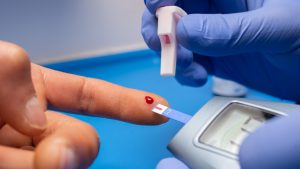Maintaining a consistent meal schedule is a simple yet powerful way to support your body’s natural rhythms and help keep your energy levels balanced throughout the day. For individuals managing diabetes, eating at regular times can empower you to stay in control and feel your best.
The Magic of Regular Mealtimes
When you eat at consistent intervals, your body becomes more predictable in how it processes food. This predictability can help:
- Optimize glucose levels: Your body can use energy from food more effectively.
- Enhance insulin function: A steady rhythm makes it easier for your body to regulate glucose.
- Boost your overall energy: Balanced eating times keep you fueled and ready to take on your day.
How to Plan Your Mealtimes
Creating a schedule doesn’t have to be complicated! Here are some simple tips:
- Start your day strong: Have breakfast within an hour of waking up to kickstart your metabolism.
- Space out your meals: Plan to eat every 4-5 hours to maintain steady energy.
- Keep snacks handy: If there’s a longer gap between meals, enjoy a small, balanced snack.
Example Schedule
Here’s a sample daily schedule to inspire you:
- 7:30 AM – Breakfast: A bowl of oatmeal topped with berries and a sprinkle of chia seeds.
- 12:30 PM – Lunch: Grilled chicken salad with quinoa and avocado.
- 4:00 PM – Snack: A handful of almonds and a small apple.
- 7:00 PM – Dinner: Baked salmon with steamed broccoli and sweet potato.
Feel free to adapt this based on your daily routine and preferences!
Benefits of Regular Mealtimes
Eating at consistent times is a small habit that delivers big rewards. It can:
- Support stability: Helps keep energy levels steady throughout the day.
- Enhance focus: Fewer energy dips mean better productivity and mood.
- Simplify planning: A predictable routine makes meal prep and grocery shopping easier.
Quick Tips for Success
- Set reminders: Use your phone or a watch to set meal reminders, especially during busy days.
- Plan ahead: Prep meals and snacks in advance to make healthy choices convenient.
- Stay flexible: Life happens! If your schedule shifts, adjust as needed without stress.
Your Path to Balance and Vitality
By eating at the right times, you’re giving your body the consistency it loves. It’s a simple yet empowering way to feel energized, supported, and ready to embrace every moment. Whether it’s starting your day with a nourishing breakfast or enjoying a snack that fuels your afternoon, your mealtime choices are steps toward thriving every day.

Type 2 Diabetes: Is It Really Reversible?
A recent National Geographic article [link] explores how type 2 diabetes could be reversible with the right approaches. This condition, which affects millions of people worldwide, has long been considered a chronic and progressive disease. However, recent research challenges this perception and suggests that with lifestyle changes and the right approach, remission is possible. The

How Do GLP-1 Drugs Compare? A Breakdown of Ozempic, Mounjaro, and Trulicity
GLP-1 receptor agonists have revolutionized diabetes management, with drugs like Ozempic, Mounjaro, and Trulicity leading the market. But how do these medications compare in terms of effectiveness, side effects, and patient outcomes? Let’s explore their differences and what they mean for diabetes patients. Understanding GLP-1 Medications GLP-1 receptor agonists mimic a natural hormone that helps

Why Has Medicare Spending on Diabetes Medications Skyrocketed in 5 Years?
In the past five years, Medicare spending on diabetes medications has increased nearly fivefold, reaching $35.8 billion in 2023. This surge has been primarily driven by the growing use of GLP-1 drugs such as Ozempic, Mounjaro, and Trulicity. But what is behind this cost escalation, and how does it affect patients and the U.S. healthcare

The Gut Microbiota and Blood Sugar Control: A Hidden Connection
The human gut is home to trillions of bacteria that play a crucial role in digestion, immune function, and even metabolism. Recent research has revealed a fascinating link between the gut microbiota and blood sugar regulation, shedding light on how the balance of microbes in our intestines can influence diabetes risk and overall metabolic health.

The Dawn Phenomenon: Why Blood Sugar Rises While You Sleep
For many people with diabetes, waking up with high blood sugar levels can be frustrating—especially if they didn’t eat anything overnight. This early-morning spike in blood glucose is known as the Dawn Phenomenon, and it happens due to natural hormonal changes in the body. But why does it occur, and how can it be managed?

The Influence of Red Light on Blood: Can It Improve Diabetes?
Type 2 diabetes is a metabolic disease characterized by insulin resistance and elevated blood glucose levels. In the search for complementary alternatives to improve glycemic control, red light therapy has gained attention due to its potential to enhance circulation, reduce inflammation, and optimize cellular function. But what does science say about it? ✨ What is

